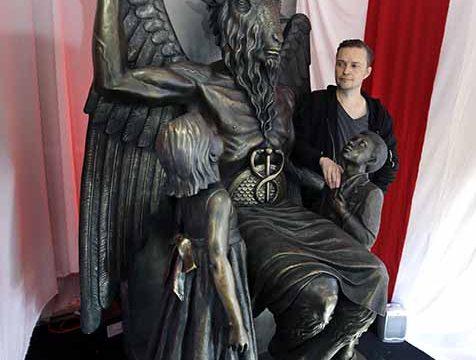Defa ‘ miliarize: v. (trans.), to render unfamiliar; to subject to defamiliarization.
This is a term that has come up again and again in my classes as of late—although it’s usually in connection to some form of writing. It’s a technique favored by authors in order to cast certain everyday words and events in a bizarre light, ultimately prodding their readers to reexamine not only the world of the novel, but also the world around them.
But even though it might not go by the exact same name, defamiliarization isn’t a process confined to the world of literature and books. To me, it seems practically synonymous with the process we more commonly know as ‘growing up.’ As we age and gain independence, we are constantly exposed to new concepts and corners of the world that oftentimes make us reevaluate what we had previously just assumed or taken for granted as true.
The two concepts of growing up and defamiliarization seem so interconnected and parallel that imagining the world around us as a novel becomes an easy stretch of the imagination. The further you progress in the book, the weirder and weirder everything gets.
And right now, there’s a lot of weirdness in the world. Following the convergence of surreal political candidates with the general weirdness that comes along with Halloween each year, it might actually be harder to imagine the world getting any stranger.
Unfortunately, the world doesn’t generally stop to give us a chance to catch our breaths. No matter where you cast your glance, you’re bound to glimpse something that will only exacerbate the bizarre nature of the world. Maybe it will even defamiliarize it.
For example, try casting your gaze toward Salem for a moment. Have you heard about its new Satanic Temple? It is one of the newest additions to the Boston-area community.
Officially opened on Sept. 26, a little over a month ago, The Satanic Temple in Salem serves as the international headquarters for the religious group also known as The Satanic Temple (TST). In a statement on the group’s website, TST spokesperson Lucian Greves notes the natural draw that TST would have toward Salem, given the area’s tumultuous history with the occult.
But to the wider public, the TST headquarters also functions as The Salem Art Gallery, a space that features a giant statue of Baphomet (the Sabbatic Goat idol) along with an exhibition called Satanic Panic.
Interestingly enough, the TST building itself, which can be found at 64 Bridge Street, isn’t exactly what you might picture when you envision a satanic temple in any capacity. A bright white paint covers the wood of the old, colonial-style house, which has numerous shrubs growing around it. A curling, iron-wrought fence borders the white steps lead from the sidewalk to the front porch, which supports a couple of columns painted that are the same dark-evergreen color as the molding surrounding the building’s many windows. A subtle black sign nestled in the shrubbery reads SALEM ART GALLERY in large letters, and then ‘The Satanic Temple’ on a much smaller sign just above.
From the outside there’s no mysterious black, no pentagrams, no inverted crosses—let alone any fire and brimstone. In a way, the whole thing is a little disappointing.
But if you poke around on the TST website, which clearly outlines the group’s mission, the disconnect between what you might imagine the Salem TST headquarters to look like and what the headquarters actually looks like might make a little more sense.
You see, The Satanic Temple might actually be a bit of a misnomer, because the religious group does not actually worship Satan. Members of TST perceive Satan less as an actual entity, and more as symbol of rebellion—a sense of rebellion that believers feel more against groups like the Westborough Baptist Church and movements like restriction of a woman’s right to choose in regard to her reproductive choices.
The worshipers involved in The Satanic Temple promote social justice, and cite acting with compassion and empathy as one of the seven tenets of their faith.
In a bizarre twist on our preconceptions about ‘devil-worshippers,’ the Satanists found in the Boston Satanic Temple espouse values that hold more honor and dignity than many others found in modern society, and they’re probably better people than you or I could ever hope to be. And if that doesn’t defamiliarize the world around you, I don’t know what will.
Featured Image by Elise Amendola/AP Photo











